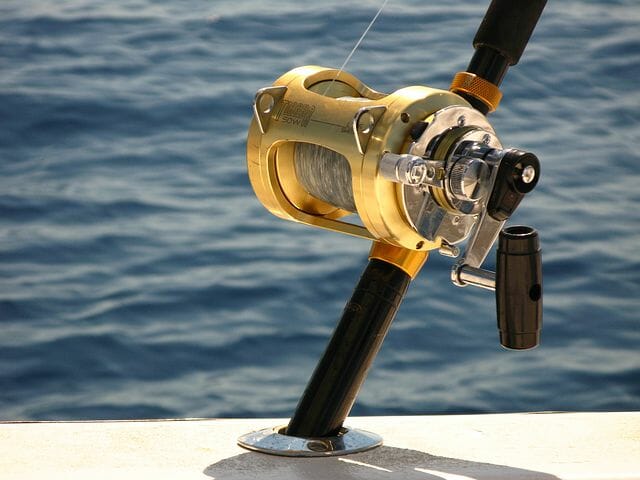People often wonder what the difference is between inshore and offshore fishing. The answer is actually quite simple.
Inshore is any fishing that takes place in water that is less than 30 meters deep, and offshore fishing takes place when the water is 30 meters or deeper.
Many people also say that offshore fishing takes place nine or more miles from the shore.
Inshore Versus Offshore Fishing
Although the differences are how far from shore you are fishing, this also changes what type of boat you need, what type of equipment you will use, your tackle, the time it takes, the electronic equipment you need, and the variety and size of the fish you will find.
Read on to learn about the differences between these two types of fishing.
Inshore fishing takes place closer to the shore. People go in inter-coastal waters, channels, bays, and other areas with water less than 30 meters deep.
Because the waters are calmer than they are in offshore fishing, people can use smaller motorboats, and even canoes or kayaks. They might use wading boots or fish near a dock.
There are many different methods of inshore , including the following:
- Drifting
- Still fishing
- Bottom fishing
- Popping
- Trolling
- Sight casting
- Fly fishing
- Dock fishing
Inshore uses lighter tackle, and it can use live or dead bait. In addition, you use GPS and fish tracking devices to find the fish. In addition, you will travel shorter distances, and you can spend more time dangling your bait to catch fish.
Most inshore fishing rods will be rated for much lighter line than an offshore rod.
The majority of inshore reels will be spinning reels or some occasional baitcasters.
Another major difference is the variety and size of the fish that you will find. When inshore , you will find the following fish:
- Snook
- Tarpon
- Bonefish
- Permit
- Speckled Trout
- Striped bass
- Flounder
- snapper
- Redfish
- Cobia
How Is Offshore Fishing Different?
On the other hand, offshore fish is also called deep sea fishing, and you will travel away from the coast to waters that are deeper than 30 meters.
They use large sports fishing boats, and the weather and time of the year will determine what kinds of fish you can catch.
Offshore fishing also uses 74-mile open radar, XM Satellite Radio & Weather, and Chirp Sonar. You will need large heavy-duty tackle and heavy bait.
Offshore fishing targets large fish, including the following:
- Grouper
- Amberjack
- Mako Sharks
- Blackfin
- Tuna
- Wahoo
- Marlin
When you go offshore fishing, you will be dependent on radar and sonar for finding the fish. The actual fishing technique is not as hands on until a fish is on the line, and it can last a long time. You typically will catch fewer fish.
Offshore fishing takes a long time, and you will plan on spending from 12 to 72 hours away from the shore.
It is not as family friendly, whereas you can take the family inshore fishing for a half-day. You should also consider that the weather and the season will play a role in what kind of fish you are able to catch.
Summary of Differences Between Inshore and Offshore Fishing
The main difference between inshore and offshore fishing is that one takes place closer to the shore.
However, this fact creates a widely different set of circumstances for the two different types of fishing. People usually do the one they prefer based on these features:
Inshore:
- Smaller inshore boats, canoes, or kayaks
- Takes place in waters less than 30 meters deep or less than nine miles from the coast
- Less equipment is necessary
- Better for families with kids
- Consistent fishing no matter the season or weather
- Fish are smaller, but you can catch more of them
- Can use live or dead bait and light tackle
Offshore Fishing:
- Larger boats specific for sportfishing
- Normally nine miles or more away from shore in waters more than 30 meters deep
- Trolling equipment and heavy tackle needed, as well as radar and sonar to track
- Heavy duty vertical jigging rods for drop fishing
- Trips from eight to 72 hours; less family friendly
- Fish behavior changes with different seasons and weather
- Large species of fish, but catching one or two is a good day
Inshore and offshore fishing take place in different locations, but the change in location makes a big difference in how you fish.

